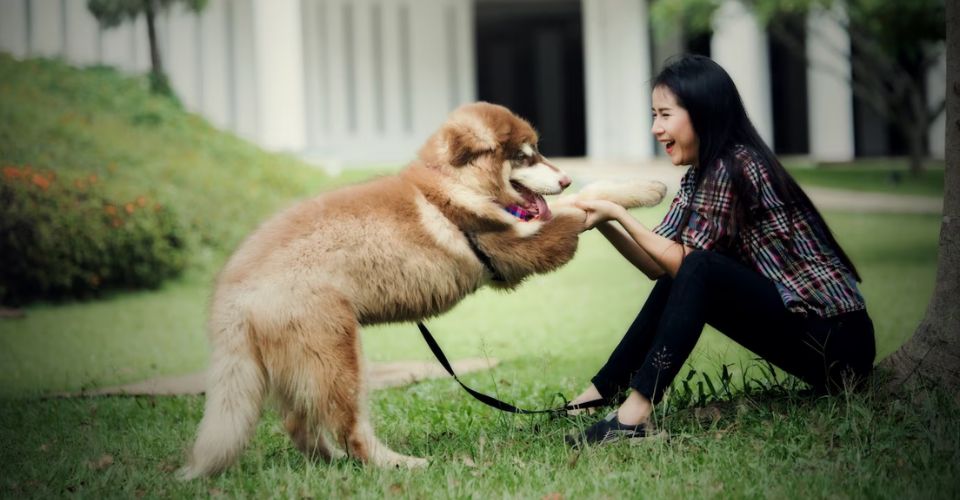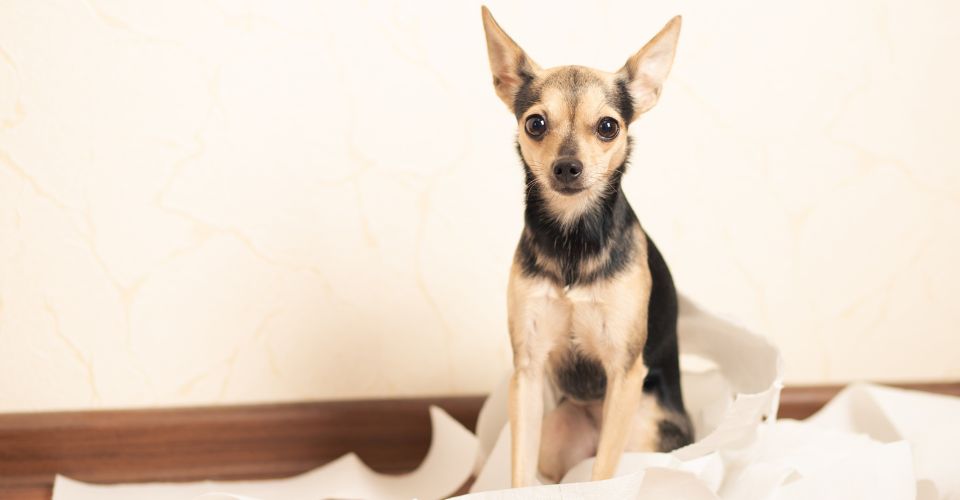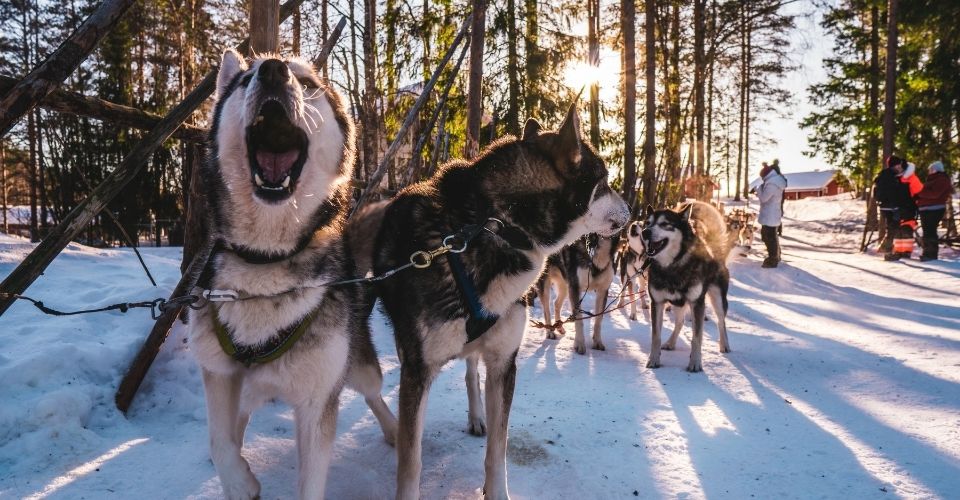How to leash train a dog, and that too, with love?
Before delving into the details, you need to know that dogs take time to get used to anything new—new environment, new people, new house, etc. Similarly, they need time and proper training to get used to a new routine of being leashed and collared.
Leash training is vital for dogs. If you take a leash-untrained dog for a walk, he may find people, cars, animals, buildings, and other distractions threatening. To avert a threat, he may attack it, out of his own vulnerability, though—something that is neither good for your dog or other people. This is precisely why we leash them, as leashing gives them a sense of protection and security.
Leash training will also come handy if you and your dog are on a long drive. Dogs like to stick their heads out of the window; a leash will keep them safe from falling out in such a situation.
Similarly, leash training of dogs is also necessary for the socialization and behavior development of dogs. However, in the beginning, they are scared of leashes. Thus, proper training would be required to assure them that leashes are for their safety and protection.
But what if your dog is afraid of the leash and snaps out after seeing it?
This article will guide you on how to leash train a dog with positive reinforcements to avoid such situations.
How to Train a Dog to Walk on a Leash?

1. Choosing the Right Leash and Collar
There are a variety of options available in the market, such as Nylon leash, Leather leash, or Rope leash. It must be kept in mind that the choice of the leash also depends on the size and breed of the dog.
- For toy or miniature breeds such as Poodles, Shih-Tzus, etc., you can use Nylon leashes, as their weak pulling force won’t break it.
- For medium-sized dogs such as Shetland Sheepdogs and French Bulldogs, you can use Nylon leashes along with dog vests.
- For large-sized dogs such as Afghan Hounds, Golden Retrievers, Labradors, etc., you can use Nylon or Leather leashes based on their pulling strength.
- For giant dogs such as Doberman Pinschers, Komondors, Akitas, etc., it is recommended to use leather leashes, as they can withstand the extreme pull force of these dogs.
Generally, a 6-feet leash is used by most dog owners. But whichever length you choose, make sure it gives enough freedom to your dog to sniff things around and stroll freely.
Also, ensure that you select a collar that is not too tight around his neck. You can also use protective collars and dog vests to prevent your dog from getting strains on his neck and back.
2. Familiarizing the Dog With the Leash
If it is the first time that your dog is seeing a leash, he might not show interest in it. Or, he might not like it at all. The following will help you familiarize him with the leash.
- Place the collar and leash close to him so he can sniff it.
- Put the collar on dog’s neck.
- Roll the leash around your arms, letting your dog know that it is not dangerous. Familiarizing the dog with a leash becomes easy if you ensure him that it’s safe.
- Rub the leash with his fur and gently caress his hair.
Repeat this process until your dog starts to play with the leash and rolls around with it.
3. Leashing Your Dog for the First Time
Now that your dog is familiar with the leash and considers it a safe thing to touch, it’s time to use the leash properly.
- Hook the leash with a collar and set your dog free.
- Let your dog play with it; let him think of it as a toy. This will keep your dog from biting the leash.
- Don’t take hold of leash yet.
4. Holding the Leash and Using a Cue
This is the part where you have to be vigilant and careful. Make sure to have a soft grip.
- Grab the free end of the leash in one hand and some yummy treats in another.
- Make sure that there are no distractions around. It is recommended to begin the training in your house.
- Give a soft tug to the leash and pull it towards you.
- When your dog reaches you, give him a treat and appreciate him.
- Repeat the process so that your dog will comprehend what you want him to do.
- Add a verbal cue or hand signal so that you don’t have to grab the leash next time to make him come to you.
5. Practice Dog Leash Training Inside
Hold the leash in your hand and do some walking inside your home. Use treats and rub his skin to appreciate him. Practice it somewhere with distractions such as toys, dog foods, other pets, and children. If your dog is pulling the leash, don’t yank or pull the leash harder. Just give it a little tug and show your dog some of his favorite treats. If he comes back, treat him with yum delights.
6. Outside Dog Leash Training
By this time, your dog has acclimatized himself to the leash and knows how to ignore distractions. Gently leash your dog and take him outside the house. Since it’s his first time walking with the leash, let him make some mistakes and correct them by giving him treats.
However, outside dog training is preferred only if your dog has socialization training.
Leashing Your Dog: Common Problems
Following is the list of common dog leashing issues, along with their solutions.
If Your Dog Pulls
If your dog pulls you towards something he is attracted to, stand still and don’t move. Don’t pull it harshly or shout at your dog. Keep his favorite toys with you, and in situations like these, distract your dog with them. This will keep your dog from pulling the leash.
If Your Dog Lunges
Bicyclists, other pets, cars, and streetwalkers can tempt your dog to lunge at them, ignoring the leash. Handling your dog can be a bit tough in such situations. But it is precisely these times where obedience training, combined with leash training, becomes handy. Since being leashed is a new experience for your dog, it will take him some time to adjust to it and follow your leash-related commands.
If Your Dog Barks
The main reason behind dog barking is when their energy levels are high, and they want to break free. To avoid this, make sure you get your dog indulged in physical and mental activities to keep their energy levels maintained.
Dogs also bark if they feel insecure; make sure you give your dog enough positive appreciation to boost his confidence.
Patience, perseverance, and treats are necessary ingredients of leash training a dog. Your dog’s intelligence level, trainability, agility, mood, and your training style, all these factors determine the time required for leash training your dog. On average, it takes four to six weeks to leash train your dog.
We hope this article on “how to leash train a dog” has helped you. It is time to start the training now. Happy training!
Did you enjoy this article? If so, we have much more in store for dog lovers like you. Especially when it comes to Training Canines. Subscribe to our newsletter and be the first one to get the latest updates, tips, and experts’ advice about dog care, feed, training, health, and wellbeing.





